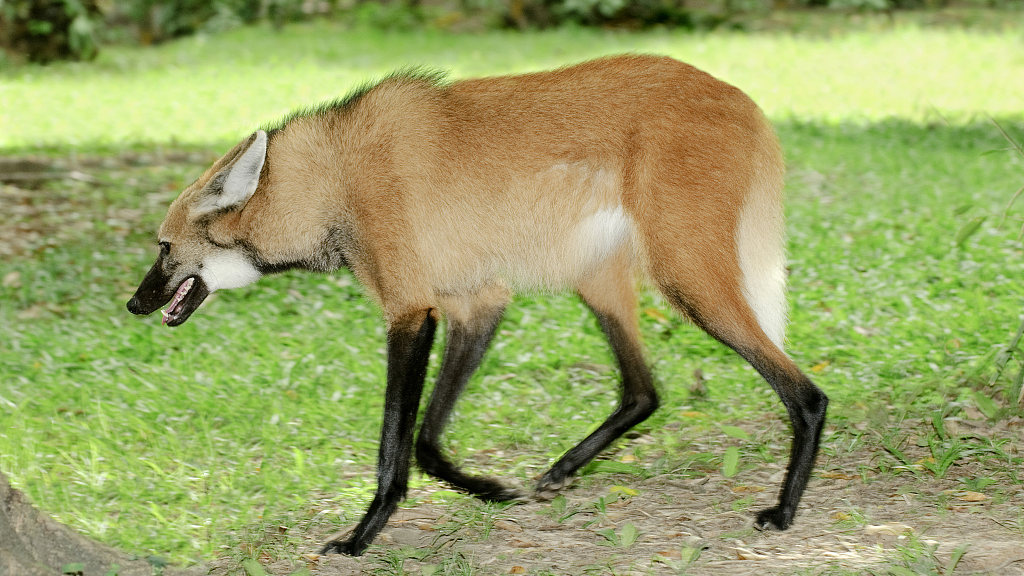Animal Hybrids: From AI Art To Real-Life Deer-Dog Mixes!
Can the boundaries of nature truly be blurred, giving rise to creatures born from the fusion of different species? The answer, as we delve into the fascinating world of hybridization, is a resounding yes, revealing a realm of biological experimentation, accidental unions, and the enduring power of evolution.
The concept of hybrid animals, offspring resulting from the mating of two different species or closely related ones, is far from a new phenomenon. Nature itself has a knack for innovation, and occasionally, these interspecies unions occur spontaneously. Artificial insemination further broadens the possibilities, allowing for planned crosses that might not happen naturally. These hybrids, possessing a unique blend of genetic material, often exhibit characteristics that fall somewhere in between their parents. Their existence, however, isn't always straightforward. While some hybrids thrive, others face challenges, including reduced fertility or other health issues.
The 1970s witnessed a surge of interest in the beefalo, a testament to human efforts in the hybridization of the American bison and domestic cattle, a combination that has long fascinated researchers and farmers alike. English settlers in the American south, as far back as 1749, had already noted genetic mixes between American bison and domestic cattle. It took a century to see the first intentional hybrids and more than two centuries for the beefalo to enter mainstream use in America. The endeavor was driven by the desire to create a meatier, hardier animal, and its a prime example of how humans have historically sought to manipulate the natural world for practical benefit.
The American elk and red deer, for example, can hybridize, with the resulting offspring exhibiting a blend of traits from both species. These hybrids demonstrate greater efficiency in antler production, a feature that has caught the attention of those involved in deer farming. In the United States, the European elk is known as moose.
In 2021, a curious case emerged from Vacaria, Brazil, where an animal shelter stumbled upon a creature that appeared to be a hybrid between a domestic dog and a Pampas fox a "false" fox that's genetically closer to canids. This discovery is just one instance of how the natural world continues to surprise us with its unexpected combinations. Even in cases where specific breeding of hybrids is not intended, nature finds its own way to mix species, creating unique blends that challenge our understanding of biology.
The study says that the dog breed of the father is unknown, but that the mother was a pampas fox. The individual specimen also contained 76 chromosomes, while dogs typically average 78, this information further highlights the intricate biological complexities and the potential for unexpected results. The existence of hybrids is not always a seamless affair, but even with their challenges, they offer an invaluable window into the workings of genetics and adaptation.
Hybridization can have profound impacts, as seen in Britain and Ireland, where hybridization with the introduced sika has led to the near destruction of the genetic integrity of red deer.
Scientists have been exploring the dynamics of deer hybridization since the 1980s. They've found that the proportion of hybrids can vary significantly within populations, ranging from 0% to 14%, with proportions under 6% often being more common. The potential for hybridization is not always a simple matter of opportunity; there can be many barriers to interspecies mating. Despite this, sometimes these barriers fail, allowing, for instance, whitetails to successfully mate with mule deer.
The world of animal hybrids extends beyond large mammals. Consider the domestic Savannah cat, which owes its long legs to the African serval side of its family. Or, think of the various dog hybrids, such as the deer head Chihuahua mix, which produces dogs with distinctive appearances. Fertile canid hybrids are also found between coyotes, wolves, dingoes, jackals, and domestic dogs. Hybrids of unknown fertility can even occur between South American foxes of the genus Lycalopex and domestic dogs.
In the realm of imagination, AI art allows the fusion of various animal characteristics. Whether it's combining features of land dwellers with sea creatures or merging birds with mammals, each creation is a showcase of innovative AI artistry and boundless imagination.
Pre David's deer, or Milu deer, serves as a fascinating example of conservation success. Native to China but introduced in European zoos in the 19th century, they faced endangerment at one point. Now, they are thriving. There's a herd in England, the animals, once on the brink, now serve as an example of what can be achieved when conservation measures are successful.
The Indominus rex, a fictional hybrid dinosaur featured in the "Jurassic World" film franchise, showcases the scientific concept of genetic manipulation and hybridization. It debuted in Lego Jurassic World: The Indominus Escape (where it was mistakenly claimed that Velociraptor DNA was used to make it) and appeared in Jurassic World: The Game and Jurassic World: The game. The Indominus rex, which combines characteristics of different dinosaurs, exemplifies the creative possibilities of genetic mixing, even if it is in a fictional context.
In this case, the hybrid was a hermaphrodite, a condition often seen in hybrids.
The offspring of a deer and a dog is often referred to as a hind, and while they are usually sterile, there have been rare cases where they have been able to reproduce. This hybrid animal combines the characteristics of both its parents, exhibiting features from both the deer and the dog family.
As the article delves into the realm of animal hybrids, it provides an overview of how species combine and the range of possibilities that these combinations offer, reflecting the natural world's innovation and the human quest to comprehend the diverse life around us.


